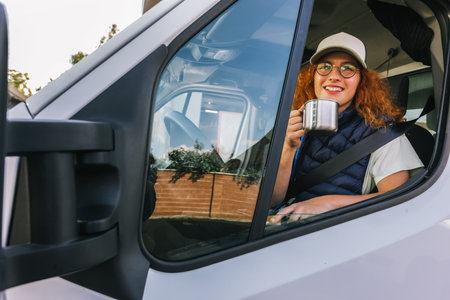1. Understanding the Rules of the Road
Before you start driving, it’s important to understand the traffic laws and regulations that keep everyone safe. Knowing these rules will help you drive legally and reduce the risk of accidents.
Basic Traffic Laws You Must Follow
- Speed Limits: Always follow posted speed limits. Driving too fast or too slow can be dangerous.
- Stop Signs and Traffic Lights: Come to a complete stop at stop signs and obey all traffic signals.
- Right of Way Rules: Learn who has the right of way at intersections, crosswalks, and when merging.
- Seat Belt Laws: Buckle up every time. It’s the law and it can save your life.
- No Texting and Driving: Using your phone while driving is illegal and extremely dangerous.
Common Road Signs and Their Meanings
Road signs provide essential information to drivers. Here are some common signs and what they mean:
| Sign | Meaning |
|---|---|
| Stop Sign | Come to a complete stop and check for other vehicles or pedestrians before proceeding. |
| Yield Sign | Slow down and allow other vehicles or pedestrians to proceed first. |
| Speed Limit Sign | Indicates the maximum legal speed for that road. |
| Pedestrian Crossing | Be prepared to slow down or stop for people walking across the street. |
| No U-Turn | Makes it illegal to turn around in the designated area. |
Why Learning Traffic Laws Matters
Understanding and following these rules will help you stay safe and avoid tickets. It also makes the roads safer for everyone. Pay attention to road signs, be aware of other drivers, and always follow the laws.
2. Avoiding Common Teen Driving Mistakes
As a new driver, its easy to make mistakes on the road. The key to staying safe is to recognize these common errors and take steps to avoid them. Below, we’ll cover some of the most frequent driving mistakes teenagers make and how to prevent them.
Speeding: The Need for Control
One of the most common mistakes new drivers make is speeding. It can be tempting to keep up with faster drivers or underestimate how much time you need to stop. However, speeding reduces your ability to react to sudden changes, increases the severity of crashes, and puts you at greater risk of losing control.
How to Avoid Speeding
- Always follow posted speed limits, even when other drivers are going faster.
- Use cruise control on highways to maintain a steady speed.
- Give yourself plenty of time to reach your destination so you don’t feel rushed.
- Pay attention to speed limit changes in school zones and residential areas.
Distracted Driving: Keeping Your Focus
Distracted driving is a major cause of accidents, especially for teenagers. Whether it’s texting, changing music, eating, or talking to passengers, any distraction can take your attention off the road. Even just a few seconds of looking away can lead to a serious crash.
How to Stay Focused
- Put your phone on “Do Not Disturb” mode while driving.
- Set your GPS and music before you start driving.
- Limit the number of passengers in your car to avoid distractions.
- Pull over if you need to take a call or send a text.
Common Mistakes and How to Prevent Them
| Mistake | How to Prevent It |
|---|---|
| Speeding | Follow speed limits, use cruise control, and give yourself extra travel time. |
| Distracted Driving | Put away your phone, set up GPS in advance, and limit passenger distractions. |
| Tailgating | Keep a safe following distance of at least three seconds behind other vehicles. |
| Not Checking Blind Spots | Always look over your shoulder before changing lanes and use your mirrors. |
| Running Red Lights | Slow down at intersections and be prepared to stop if the light turns yellow. |
By being aware of these common mistakes and taking steps to prevent them, you can become a safer and more confident driver. Developing good habits early on will help protect you and others on the road.
![]()
3. Three, The Importance of Defensive Driving
Driving requires more than just knowing the rules of the road. Developing defensive driving skills is essential for staying safe, especially for new teen drivers. Defensive driving helps you anticipate potential hazards, react appropriately, and avoid accidents before they happen.
What Is Defensive Driving?
Defensive driving is a proactive approach to driving that focuses on anticipating and preventing potential dangers. Instead of reacting to situations at the last minute, defensive drivers stay aware of their surroundings, maintain safe distances, and plan ahead for possible risks.
Key Defensive Driving Techniques
Applying good defensive driving habits can make a huge difference in preventing accidents. Here are some key techniques to practice:
| Technique | Description |
|---|---|
| Stay Alert | Keep your focus on the road, avoid distractions, and be aware of other drivers’ behavior. |
| Maintain a Safe Following Distance | Keep at least a three-second gap between your car and the vehicle in front of you to allow enough reaction time. |
| Anticipate Other Drivers’ Actions | Expect sudden stops, lane changes, and unexpected maneuvers from other drivers. |
| Adjust to Weather Conditions | Slow down and increase your following distance in rain, fog, or other hazardous conditions. |
| Follow Speed Limits | Always drive at a safe speed based on road conditions, even if its below the posted limit. |
Why Defensive Driving Matters
Teen drivers are more likely to be involved in accidents due to limited experience and reaction time. Defensive driving helps reduce this risk by preparing drivers to handle unexpected situations safely. It also encourages responsible driving habits that lead to safer roads for everyone.
How to Improve Your Defensive Driving Skills
Becoming a skilled defensive driver takes practice and awareness. Here are some ways to improve:
- Take a defensive driving course: Many states offer courses that teach essential techniques and can even reduce insurance costs.
- Practice situational awareness: Always scan the road ahead, check mirrors frequently, and be mindful of blind spots.
- Avoid aggressive driving: Stay calm in traffic, don’t engage with aggressive drivers, and avoid unnecessary risks.
- Stay up to date on traffic laws: Understanding traffic regulations helps you anticipate and react appropriately in different situations.
Final Thoughts
Defensive driving isnt just about protecting yourself—its about making the roads safer for everyone. By staying alert, planning ahead, and practicing good driving habits, teen drivers can build confidence and reduce their chances of being in an accident.
4. Handling Emergencies and Unexpected Situations
Even the most careful drivers can encounter unexpected situations on the road. Knowing how to react to car trouble, accidents, and other emergencies can help keep you safe. Stay calm, follow the right steps, and always prioritize safety.
What to Do If Your Car Breaks Down
If you experience car trouble, follow these steps:
- Turn on your hazard lights: This alerts other drivers that your car is experiencing issues.
- Pull over safely: Move to a shoulder or parking lot, if possible.
- Stay inside the car: If you are on a busy road, remain inside with your seatbelt on.
- Call for help: Use your phone to contact roadside assistance or a trusted family member.
- Use emergency supplies: Keep items like a flashlight, jumper cables, and a first-aid kit in your car.
Steps to Take After an Accident
Accidents are stressful, but staying composed is essential. Heres what to do:
- Check for injuries: Ensure that you and any passengers are safe.
- Move to a safe location: If possible, move vehicles out of traffic.
- Call 911: Report the accident, even if its minor.
- Exchange information: Share contact and insurance details with the other driver.
- Take photos: Document damage, license plates, and the surrounding area.
- Avoid admitting fault: Let insurance companies and authorities determine responsibility.
- Notify your insurance company: Report the accident as soon as possible.
Dealing with Other Driving Challenges
| Situation | How to Respond |
|---|---|
| Tire Blowout | Grip the steering wheel firmly, avoid slamming the brakes, and slow down gradually before pulling over. |
| Brakes Fail | Shift to a lower gear, pump the brakes, and use the emergency brake if necessary. |
| Car Skidding | Steer gently in the direction you want to go and avoid severe braking. |
| Engine Overheats | Turn off the A/C, pull over, and wait for the engine to cool before checking. |
Importance of Staying Prepared
Being ready for emergencies makes a big difference. Keep an emergency kit in your car with essentials like water, a phone charger, and basic tools. The more prepared you are, the easier it will be to handle unexpected situations calmly and effectively.
5. Five: Safe Driving Habits for a Lifetime
Building safe driving habits early on is crucial for staying safe on the road. By consistently making responsible choices, you can ensure a lifetime of safe driving. Here are three key habits to develop:
Always Wear Your Seatbelt
Wearing a seatbelt is one of the simplest and most effective ways to protect yourself in a crash. It keeps you securely in place and reduces the risk of serious injury.
Why Is a Seatbelt Important?
| Benefit | How It Helps |
|---|---|
| Prevents Ejection | Keeps you inside the vehicle during a crash, reducing the chances of fatal injuries. |
| Reduces Impact | Distributes the force of a crash across stronger parts of the body, minimizing injuries. |
| Legal Requirement | In most states, wearing a seatbelt is mandatory, and fines apply if you don’t wear one. |
Make Responsible Decisions
Safe driving is all about making smart decisions on the road. This means avoiding distractions, driving at a safe speed, and being aware of your surroundings.
How to Make Safe Decisions
- Follow the speed limit and adjust for weather conditions.
- Avoid using your phone while driving—even hands-free mode can be distracting.
- Stay at least three seconds behind the vehicle in front of you for a safe following distance.
- Always use your turn signals to communicate with other drivers.
Avoid Impaired Driving
Driving under the influence of alcohol, drugs, or even extreme fatigue is dangerous and illegal. Impaired driving slows your reaction time, affects your judgment, and puts everyone at risk.
Alternatives to Driving Impaired
- Call a family member or friend for a safe ride home.
- Use a rideshare service or public transportation.
- Stay overnight rather than risk driving while impaired.
- Take turns being the designated driver when out with friends.
Developing these habits from the start will help you become a lifelong safe driver. The more you practice responsible driving, the more natural it will become.


